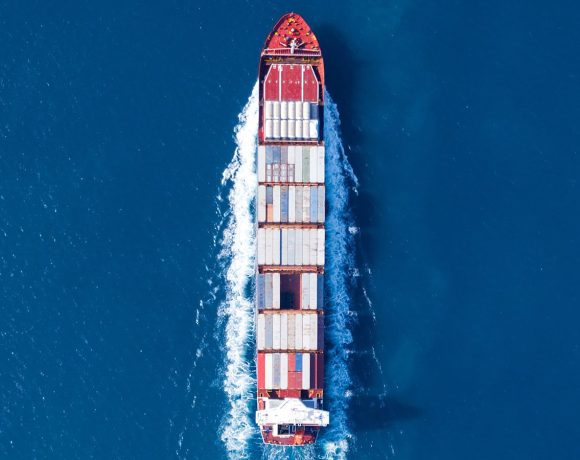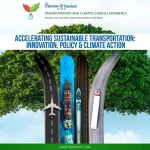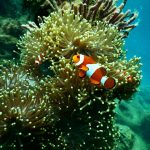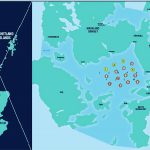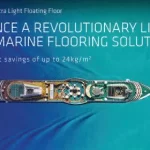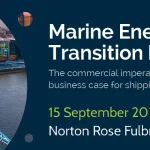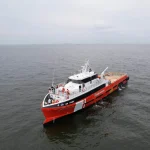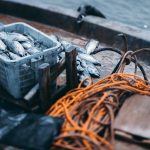Marine Ecology News Digest April 2025
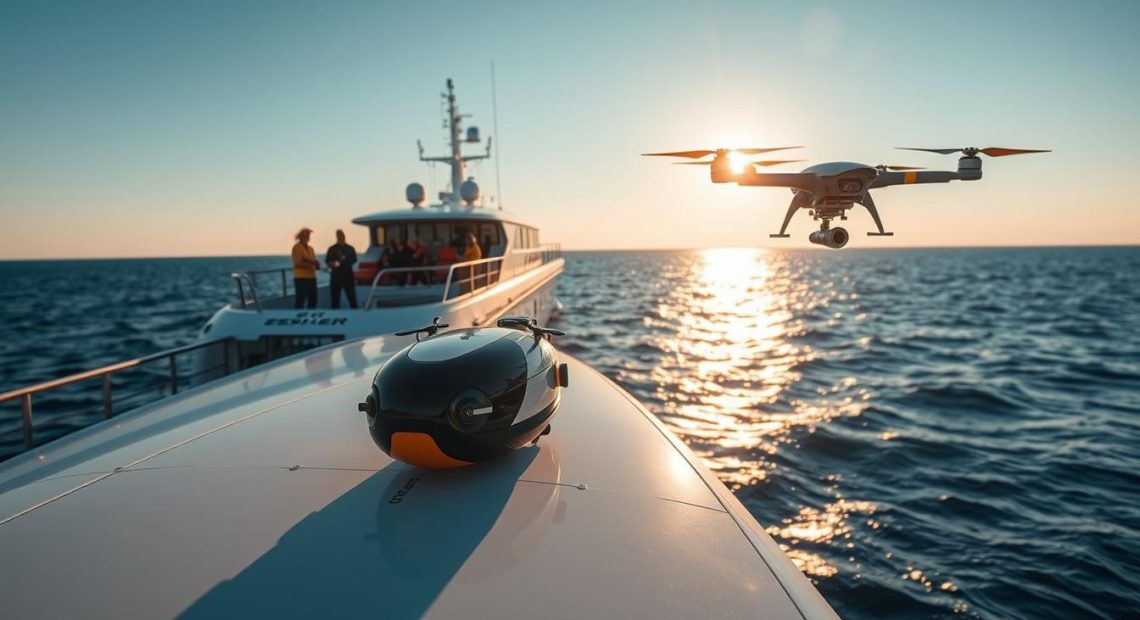
The first quarter of 2025 has shown worrying changes in our oceans worldwide. Thanks to new monitoring tech, researchers can track these changes with great detail. This gives vital insights to both industry experts and conservationists.
This digest brings together the most important news from April 2025. It combines key info from top research places, government bodies, and conservation organisations globally. Our goal is to give maritime experts the latest on ecological issues and progress.
Sea temperatures are rising, changing life in British waters and more. It’s key for those working at sea to know about these changes. The latest marine research shows both problems and chances in the field.
This edition covers the health of UK coasts and new tech for underwater monitoring. It gives a detailed look at ocean conservation efforts and policy changes affecting sea life. Let’s see how these updates can help with responsible sea practices in a changing world.
Latest Marine Ecology News and Developments
April 2025 has been a big month for marine ecology. New findings and global teamwork are tackling urgent ocean issues. The science community is working hard to understand and protect our oceans.
Recent data shows our oceans are getting warmer at an alarming rate. This is the highest level in 65 years. The warming has sped up a lot in the last 20 years.
Sea levels are also rising fast, posing big challenges for coastal areas. These changes threaten vital habitats like mangroves and seagrass meadows. They act as natural buffers against storm damage and are key for many marine species.

Key Findings from the Global Ocean Summit 2025
The Global Ocean Summit 2025 in Monaco brought together experts from all fields. This event was a turning point for marine conservation worldwide.
The summit showed that ocean warming is happening faster than expected. It also led to a plan for international cooperation on marine protected areas. This plan focuses on working together across borders.
Some key outcomes from the summit include:
- Establishment of a unified monitoring protocol for tracking ocean temperature changes
- Creation of a rapid-response funding mechanism for threatened marine ecosystems
- Development of standardised methodologies for assessing marine biodiversity
- Formation of a multinational task force to address illegal fishing practices
Major Scientific Publications Released This Month
Several important scientific papers have been published this April. The Journal of Marine Science found that our oceans can store more carbon than thought. This discovery is key for climate models.
Nature Oceanography published research on ocean current changes. It shows how these changes could affect global climate. The study highlights important points in the North Atlantic circulation.
These studies offer both challenges and opportunities for the maritime industry:
- New predictive models for planning shipping routes amidst changing current patterns
- Updated environmental impact assessment frameworks for offshore operations
- Enhanced understanding of carbon cycling for blue carbon investment strategies
- Refined approaches to sustainable fisheries management in warming waters
British Waters Conservation Status Update
April 2025 is a key time for protecting British waters. New measures aim to meet the UK’s 2030 environmental goals. The UK has added more Marine Protected Areas (MPAs), expanding the network of protected marine ecosystems.
This move is a big step towards protecting 30% of national waters by 2030. The new MPAs include areas vital for seabirds and marine mammals. The UK has also set up Highly Protected Marine Areas (HPMAs) with stricter rules than usual MPAs.
North Sea Protection Initiatives
The North Sea is a key area for UK marine protection. New fishing rules have been put in place in sensitive areas. These rules protect habitats like cold-water coral reefs and sandbanks, which are important for fish.
Monitoring systems have been set up to watch marine mammals, like harbour porpoises. This effort involves the government, fishing industry, and conservation groups. It shows how working together can protect the North Sea and support fishing.
Celtic Sea Biodiversity Assessment
The Celtic Sea’s biodiversity assessment shows both good and bad news. Some fish, like cod and haddock, are recovering. But, deep-water species are under a lot of pressure.
Advanced DNA sampling has given us new insights into the Celtic Sea’s species. It has found biodiversity hotspots, like underwater seamounts. This information is helping plan better conservation for the area.
Channel Islands Marine Reserves Expansion
The Channel Islands’ marine reserves have grown by 150 square kilometres. This protects important habitats for seabirds and marine mammals. It also helps with sustainable fishing.
Local authorities have come up with new ways to manage the reserves. They allow different activities in different areas. This approach is a good example for other British waters.
Breakthrough Research in Marine Biodiversity
Marine biodiversity research has made a big leap forward this April. New discoveries are changing how we see ecosystems. They show that marine life is more connected than we thought.
This means we need to keep marine areas connected. It helps species stay healthy and adapt to changes.
Discovery of New Deep-Sea Species in the Atlantic Trenches
A British team found 17 new deep-sea species in the Atlantic trenches. They explored depths over 6,000 metres. They found life forms that can handle extreme pressure.
Some of the most interesting finds include:
- Bioluminescent crustaceans that light up in new ways
- Transparent fish with special cells to handle pressure
- Invertebrates with new kinds of relationships
- Microbes living in places we thought were too harsh

These discoveries are more than just new species. They show how life can thrive in extreme places. The team used advanced tech to study these species in their homes.
Implications for Evolutionary Biology
The finds challenge old ideas about evolution. They show that deep-sea life evolves in new ways. Scientists found that similar traits can develop independently in different species.
This could mean we need to rethink how we understand evolution. It might change how we classify species, focusing on how they adapt to deep-sea life.
Conservation Status of New Findings
Many of these new species might be endangered. They need special habitats and are found in limited areas. They face threats from:
- Deep-sea mining
- Climate change
- Submarine cables
- Pollution
Scientists are working fast to protect these unique ecosystems. They know how important they are for science and nature.
Advancements in Environmental DNA Monitoring Techniques
At the same time, big steps have been made in environmental DNA (eDNA) monitoring. New devices can quickly identify species in the sea. This makes research cheaper and more efficient.
These tools can find species by their DNA in water. They help in many ways:
- Monitoring rare species
- Checking fish stocks
- Finding invasive species
- Studying pollution’s effects
- Ensuring environmental rules are followed
The sea industry is using these environmental DNA tools. It helps them follow rules and protect the sea. This is a big step towards saving the sea and its life.
Climate Change Impacts on Coastal Ecosystems
Climate change is a big challenge for British coastal ecosystems in 2025. It’s causing big changes in marine habitats all over the UK. The UK Marine Climate Change Impacts Partnership has found worrying trends that need urgent action.
Ocean acidification is getting worse, making it hard for many marine creatures to survive. These creatures are key to the food webs in our oceans.
The effects of these changes are clear along Britain’s 17,820-kilometre coastline. Marine heatwaves have gone up by 34% in just two years. This is hurting sensitive habitats and the creatures that live there.
Rising Sea Temperatures Along British Coastlines
Sea temperatures in British waters have risen by 0.5°C in the last decade. The North Sea and English Channel have seen the biggest increases. These areas are warming at nearly double the global rate.
This warming is causing big problems. Cold-water coral reefs off Scotland’s west coast are showing signs of stress. Seagrass meadows, important for carbon and as nurseries, have shrunk by 12% in some areas.
Thermal stratification is getting worse in many coastal areas. This is making it hard for life in the bottom waters. The Celtic Sea has seen oxygen levels drop, with waters staying stratified for longer than before.
Shifting Migration Patterns of Native Fish Species
Warming seas are causing fish to move north. Species like cod are moving 6 kilometres each year. This is a big problem for fishing communities that have relied on these fish for years.
At the same time, fish from the south, like anchovies, are coming into British waters. This is good for some, but it’s also a challenge for native species. It means we need to adapt how we manage our fishing.
The maritime industry is using new technology to deal with these changes. They’re using climate data to plan their operations. The UK Fisheries Management Authority is also changing how they manage fishing to adapt to these changes.
Sustainable Fisheries Management Updates
April 2025 is a big moment for sustainable fishing in the UK. New frameworks and technologies are changing the maritime industry. Now, we can balance fishing and marine conservation better than ever before.
The fishing sector is changing, with sustainability at its core. This shows that looking after the sea and making money can go hand in hand. It’s all about working together and using science.
Post-Brexit Fishing Regulations in British Waters
This month, the UK starts using a new way to manage fishing. It’s called Ecosystem-Based Fisheries Management. This new system looks at the whole sea, not just one fish at a time.
This new approach has some big changes:
- It can adapt to changes in fish numbers
- It uses satellite tech to track fishing boats
- It checks how fishing affects the sea and people
- It works with fishers, scientists, and conservationists
Fishing communities are now helping make these rules. “Their local knowledge is key to making rules that protect the sea and help coastal jobs,” says the Department for Environment, Food and Rural Affairs.
Technological Innovations in Selective Fishing Methods
New tech in fishing is changing how British boats work. AI catch monitoring lets boats know what they’ve caught right away. This means they can let go of fish they shouldn’t catch.
New fishing gear is also making a big difference. It uses sound to scare away fish that shouldn’t be caught. This gear has cut down on unwanted catch by up to 85%.
These new technologies are good for everyone:
- They help follow rules without slowing down fishing
- They make fish better for eating
- They save fuel and time
- They help sell fish in markets
These advances show how tech can help both make money and protect the sea. As we keep improving, the future of fishing in the UK looks bright for the sea and the people who depend on it.
Marine Pollution Research and Mitigation
In April 2025, scientists found worrying patterns in microplastic distribution. This has led to new efforts to protect marine ecosystems. Research shows how working together can help fight marine pollution.
Microplastics Concentration in the Irish Sea
A study by the University of Liverpool found high microplastics levels in the Irish Sea. They found an average of 5.7 particles per cubic metre. The highest levels were near cities.
Most microplastics were from textiles and packaging. There were changes in pollution levels with the seasons. These changes were linked to tourism and farming.
“This study is a big step forward in understanding microplastic pollution,” says Dr. Emma Clarke. “We found that pollution can be reduced by acting during busy times.”
This research also warns about health risks from eating seafood with microplastics. The maritime industry is now using better filters and supporting efforts to reduce plastic waste.
Community-Led Beach Cleanup Results from April 2025
In April, community cleanups removed over12 tonnes of marine debris from British beaches. These efforts were at 78 locations. They helped find ways to stop pollution before it happens.
Most of the waste was single-use plastics, but that’s 7% less than before. This shows that rules are starting to work.
The “Source to Sea” initiative was very successful. It shows how waste from land affects the sea. It made people understand the link between waste management and pollution.
James Bennett from the Marine Conservation Society says, “Companies are now helping more than ever.” They give money and help with cleanups. This shows how businesses can help the environment.
These partnerships are key to solving pollution problems. They help make policies better. The data from cleanups guides these efforts.
Coral Reef Restoration Progress Reports
April 2025 has seen big steps forward in coral reef restoration. Despite ocean warming and bleaching, new solutions are coming fast. Corals in places like the Arabian Gulf are showing scientists how to make reefs stronger.
Some reef fish can get used to warmer waters faster than we thought. This is true for species in the Arabian Gulf. Now, restoration projects are using this knowledge to make reefs more resilient against ocean changes.
Laboratory-Grown Coral Deployments
British coral restoration efforts have hit major milestones this month. Over 15,000 coral fragments have been transplanted in the Caribbean and Indo-Pacific. This is thanks to new aquaculture methods from the National Oceanography Centre in Southampton.
The centre’s work has made coral grow up to 50% faster. The “reef modules” are a big success. These 3D-printed structures are covered in coral species to create complex habitats.
Early results show great success:
- 87% of transplanted corals survived
- Reef fish colonised the reefs in weeks
- Invertebrate diversity increased
- The reefs became more complex like natural ones
- They also became more resilient to storms
Heat-Resistant Coral Strains Development
Creating heat-resistant corals is a key area in marine science. Researchers at the University of Exeter have made big strides in breeding corals that can handle heat better.
They’ve mixed heat-resistant corals from the Persian Gulf with others from cooler areas. These hybrids can handle temperatures 2°C higher than their parents. This is a big plus in our warming oceans.
CRISPR gene editing has also helped find genes linked to heat tolerance. This means scientists can breed corals more efficiently. They’ve built a library of genes for future use in restoration.
These “climate-ready” corals give hope for reef survival. But, cutting carbon emissions is key for long-term success. The lab work is a vital backup while we work on the climate.
Academic Contributions to Marine Ecology News
UK universities are leading the way in marine research. They explore deep-sea ecosystems and work together on conservation. This research helps us understand and protect our oceans better.
It connects theory with action, giving us data for better policies and plans. University-led marine research initiatives are key. They use science and new ideas to tackle big ecological problems.
University of Plymouth’s Deep-Sea Expedition Findings
The University of Plymouth went on a deep-sea journey to the Porcupine Abyssal Plain. They found new things about life in the deep sea. They used special vehicles to see and study deep-sea life.
They found communities living in extreme conditions. These communities could change biotechnology and medicine. Their survival secrets are important for science.
The team also learned about how the deep sea helps control the climate. This knowledge is key for managing resources and assessing environmental impacts. The marine ecology academia world sees this research as a big win for conservation.
Oxford-Cambridge Marine Conservation Collaborative Project
The Oxford-Cambridge Marine Conservation Collaborative is a new way of working together. Oxford brings marine policy expertise, while Cambridge leads in marine genomics and ecology. Together, they create strong conservation plans.
This month, they shared how well Marine Protected Areas (MPAs) work in British waters. They used new ways to measure success, looking at ecology, economy, and society. Their work is now guiding the UK government and international groups.
This project shows how research can lead to real conservation projects. It helps protect the sea while also using its resources wisely. Their work is a big step forward in marine protection.
Ocean Policy Developments
Transformative ocean policy initiatives have gained momentum this month. This signals a new era in maritime governance. The evolving landscape of marine management shows oceans are vital for both economy and ecology.
Recent developments at national and international levels show a shift. This shift is towards more integrated and sustainable ocean governance.
UK Government’s Blue Economy Strategy Implementation
The UK Government has sped up its Blue Economy Strategy. The Marine Strategy 2025-2035 has been launched. This aims to revitalise marine ecosystems and support sustainable growth in coastal communities.
The Marine Innovation Fund is at the heart of this strategy. It has £75 million for technologies that reduce maritime industry impacts. It focuses on zero-emission vessels and sustainable aquaculture for ecological and economic benefits.
Regional pilot projects are starting to implement the strategy’s spatial planning. These projects show how to coordinate marine activities. They aim to protect sensitive habitats while supporting diverse marine activities.
The strategy is a big step towards treating our seas as interconnected systems. It moves away from seeing them as fragmented resources.
International Maritime Organisation’s New Shipping Regulations
April 2025 sees the start of new maritime regulations from the International Maritime Organisation (IMO). These are the most significant environmental standards for global shipping in over a decade.
The new MARPOL Annex VI standards set stricter limits on sulphur and nitrogen oxide emissions. New ballast water management rules also aim to stop invasive species spread.
The “Green Shipping Corridor” framework is also introduced. It offers incentives for zero-emission shipping routes. British maritime technology firms are leading in developing solutions for these new standards.
These changes match the World Trade Organisation’s agreement on fishing subsidies. This agreement aims to reduce pressure on global fish stocks. Together, these policies show a growing international push for sustainable ocean governance.
Technological Innovations in Ocean Monitoring
The way we monitor the ocean has changed a lot with new technologies. These advancements give us deep insights into our marine world. Now, we can collect data over huge areas and get it in real-time.
Today’s monitoring systems use many technologies together. This creates a network that lets scientists track changes and protect marine areas. It also helps enforce rules at sea better than before.
Artificial intelligence has made these systems even better. AI can quickly go through lots of data. It finds patterns and changes that might show pollution, illegal fishing, or big ecological shifts.
Autonomous Underwater Vehicles Network in the North Atlantic
The National Oceanography Centre has set up a network of underwater vehicles in the North Atlantic. Led by Britain, it uses 12 gliders to collect ocean data without people.
These underwater vehicles have special sensors. They measure things like water chemistry, temperature, and marine life sounds. They also track currents and how much phytoplankton there is.
This network is special because it can change its plan if it finds something interesting. It can move to study algal blooms or unusual temperatures. This gives us a detailed view of the ocean, helping with climate studies and managing fisheries.
Satellite Tracking of Endangered Marine Species
The Marine Megafauna Monitoring System is a big step forward in satellite tracking. It’s a project between British universities and tech firms. It uses high-resolution images and AI to watch endangered sea creatures.
This system doesn’t need to tag animals. It can spot them by their unique looks. This way, we can study whales, sharks, and turtles without bothering them.
The data from this satellite tracking helps plan shipping routes. It helps avoid hitting endangered animals. This shows how monitoring tech helps protect the sea and supports safe shipping.
Marine Renewable Energy and Ecosystem Interactions
In April 2025, we made big strides in understanding how marine renewable energy affects the ocean. The UK is growing its offshore renewable energy, and experts are finding new ways to watch and lessen harm to the sea. They want to make sure we get clean energy without hurting the sea.
Offshore Wind Farms in Scottish Waters: Environmental Impact Assessment
This month, a five-year study on Scottish offshore wind farms was released. It gives us a detailed look at how these farms affect the sea. The study focused on the Moray Firth and Firth of Forth.
The study found that seabirds sometimes move away from wind farms. But, it also found some good news. The area around the wind farms became safer for marine life, with more species found.
It’s exciting to see that the bases of the turbines are becoming homes for many sea creatures. This is helping to increase the number of fish in the area. Dr. Emma Sutherland said, “We’re seeing turbine bases functioning as productive marine habitats, which challenges our initial assumptions about ecological impacts.”
These discoveries are helping us make better plans for future wind farms. We want to make sure they help the sea and don’t harm it.
Tidal Energy Projects in the Orkney Islands
The Orkney Islands are now seeing a new wave in tidal energy. They’re using new turbines that are kinder to the sea. The European Marine Energy Centre is watching how wildlife interacts with these turbines.
So far, the data shows that the risk of animals getting hurt is much lower than thought. This is because the turbines are designed to avoid harming sea creatures. They move slower and have features to scare away wildlife.
The projects have set up advanced systems to watch the sea. These systems help us follow rules and learn more about the sea. They use cameras, sound monitoring, and DNA tests to understand the sea better.
“The maritime industry is both learning from and contributing to these advances,” says Ian MacLeod. “By using vessel-based observation platforms and adapting operations to protect sensitive habitats, we’re demonstrating how renewable energy and marine conservation can work in harmony.”
These advances show how new technology can help solve problems in marine energy. They help Britain move towards cleaner energy while keeping its sea life safe.
Conclusion: Navigating the Future of Marine Conservation
April 2025 has shown us big challenges and new hopes in marine ecology. Rising sea temperatures and changing migration patterns are hard on our oceans. But, new ideas are coming up in British waters and worldwide.
The Channel Islands are growing their marine reserves, and the North Sea is getting new protection. These steps are key to saving our oceans. New tech like environmental DNA monitoring and underwater robots are helping scientists a lot.
Beach cleanups in April were a big success, removing tons of trash. This local effort matches the UK’s Blue Economy Strategy and global shipping rules to cut pollution.
There are good signs for the future of marine conservation. We’re seeing lab-grown corals, more citizen science, and a focus on blue carbon in fighting climate change.
We need to find a balance between making money and saving the environment. Using new tech and old wisdom, we can protect our oceans. This way, we help our coastal communities too.

